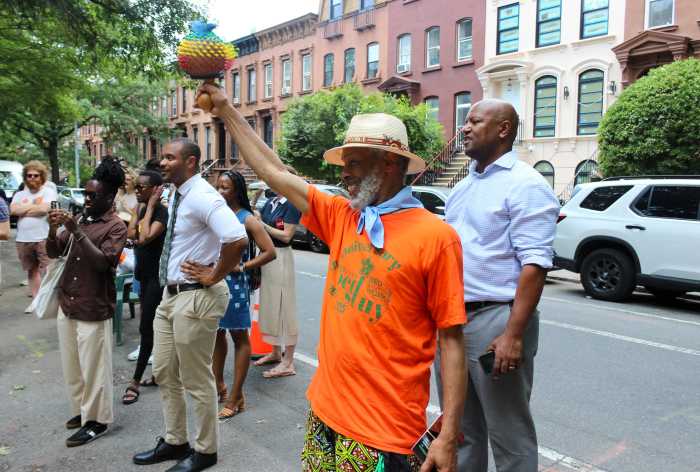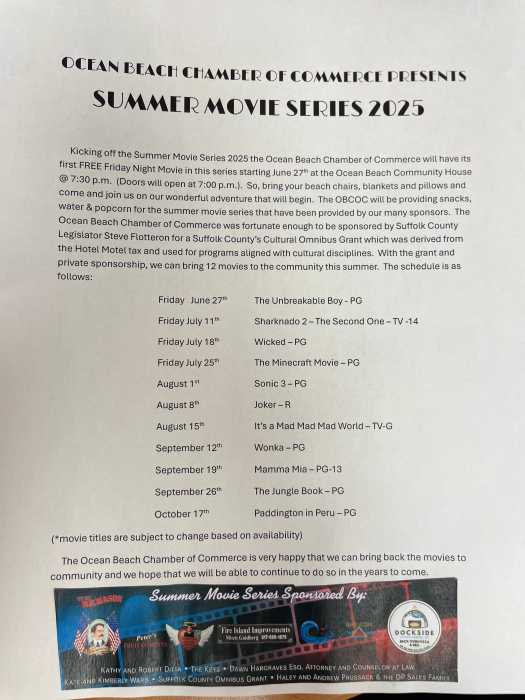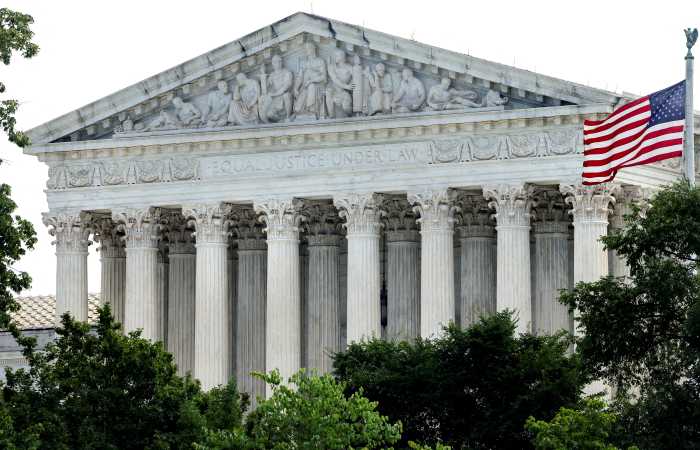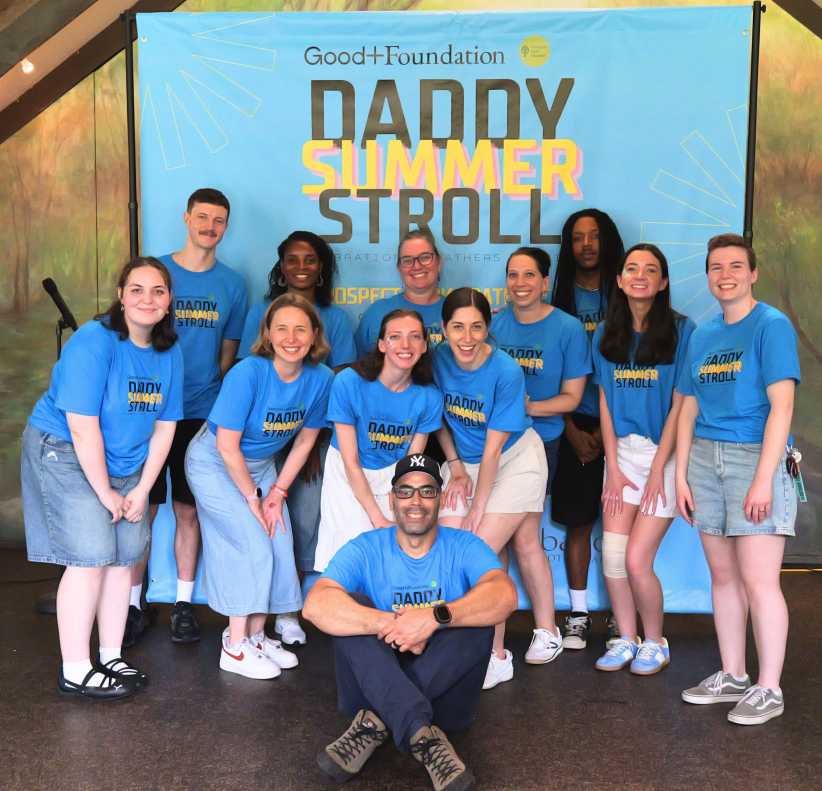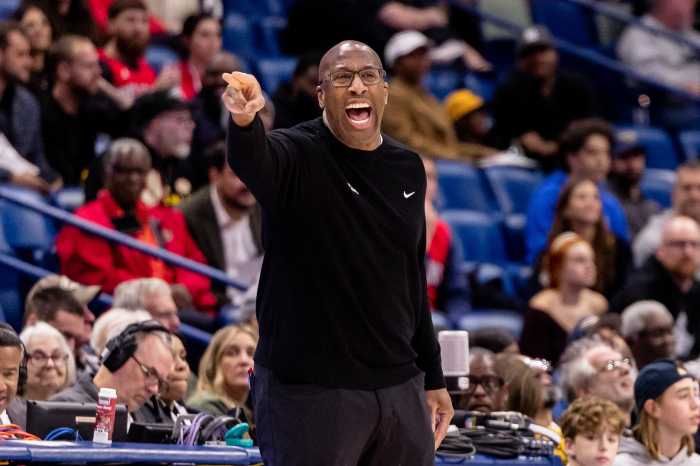Bruce Ratner and architect Frank Gehry are discussing modifications to
reduce the number of buildings that would have to be condemned to build
the massive Altantic Yards basketball arena, office tower and residential
development, a Forest City Ratner consultant confirmed this week.
“What the architects are doing is figuring out how to have the least
impact while maintaining the value of the Gehry-designed buildings,”
said Richard Lipsky, a lobbyist for Forest City Ratner.
“It’s all being looked at,” he said. “When you get
into the construction, plans are always in the process of being reconsidered.
If we can mitigate the amount of people who would be forced out as a result
of condemnation, well, that’s a priority.”
Lipsky made his comments to The Brooklyn Papers regarding the 22-acre
plan that would, as currently proposed, displace more than 500 people
from either homes or jobs within the site.
And Bruce Bender, Forest City Ratner’s executive vice president for
Government and Public Affairs, told Newsday this week that Ratner and
Gehry were in talks to lessen the plan’s reliance on the state to
condemn private property through its eminent domain powers.
Bender and Lipsky, as well as Ratner spokesman Joe DePlasco, all declined
to discuss what buildings might be saved or if any of the 17 towers planned
to be built around the arena would be removed from the plan.
Keith Mendenhall, a spokesman for Gehry, also declined to comment.
Norman Seigel, the former head of the New York Civil Liberties Union,
is representing many of the Prospect Heights residents who would be displaced
in a pending lawsuit.
He said this week that a survey he conducted found that 334 people in
162 apartments and 33 businesses with 235 employees would be displaced
by the Ratner plan.
The news of changes belies comments made by Forest City Ratner executive
vice president Jim Stuckey who told some 200 people at a public forum
in March that changes were not in the works.
“[Shifting the arena] would require bridging over 350 to 500 feet
of Atlantic Avenue,” he said.
Borough President Marty Markowitz met with anti-arena activists this week
to discuss, in bullet point, everything from the number of buildings expected
to be condemned to traffic concerns and parking.
Joel Towers, an urban designer and a member of Develop Don’t Destroy,
was at that meeting and advocated alternative plans for the project.
According to sources, Markowitz would not commit to backing any new recommendations.
DePlasco said on Wednesday that “a huge amount of engineering and
design work” goes into such developments and that it would be premature
to comment on specifics.
“What we’ve said all along is that the current plan is a process
that continues,” said DePlasco. “From the beginning the guiding
principle has been to minimize impact on residents and that remains a
guiding principle.”
“But it does call for some people moving,” he added.


